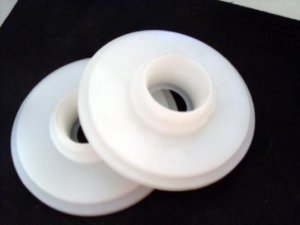POM

POM is a thermoplastic crystalline polymer with the scientific name polyoxymethylene. The structural formula is CH-O, before 1942, formaldehyde polymerization is mostly obtained by the polymerization degree is not high, easily subject to thermal depolymerization of polyoxymethylene glycol HO CH O H, which = 8 ~ 100 for paraformaldehyde; more than 100 for - paraformaldehyde, around 1955, the United States DuPont company from formaldehyde polymerization to get formaldehyde homopolymer, namely homopolymer. The United States Celanese company from the triple formaldehyde, made with a small amount of dioxopentacyclic or ethylene oxide copolymer, that is, the copolymer formaldehyde, the trade name Celcon.
Paraformaldehyde is easily crystallised, with a degree of crystallinity of 70%; this can be increased by annealing at high temperatures. Homopolymer formaldehyde has a melting temperature of 181°C and a density of 1.425 g/cm . The melting point of homopolymeric formaldehyde is around 170°C. The glass transition temperature of homopolymeric formaldehyde is -60°C. The glass transition temperature of homopolymeric formaldehyde is -60°C. Phenolic compounds are the best solvents for paraformaldehyde. The study of the melting index shows that homopolymeric formaldehyde has a narrow molecular weight distribution. Co-polyformaldehyde is stable to chemical reagents except strong acids, oxidising agents and phenols, while homopolymeric formaldehyde is also unstable to concentrated ammonia. Stabilised paraformaldehyde can be heated to 230°C without significant decomposition. Paraformaldehyde can be compressed, injected, extruded, blow moulded and other methods, processing temperature of 170 ~ 200 ℃; also available machine tool processing, but also welding. The products are light, hard, rigid and elastic, dimensionally stable, with a low coefficient of friction, low water absorption, good insulation properties and resistant to organic solvents; they can be used in a wide range of temperatures -50 to 105°C and humidity; they remain unchanged under the action of various solvents and chemical reagents, as well as under heavy loads and long cyclic stresses.


